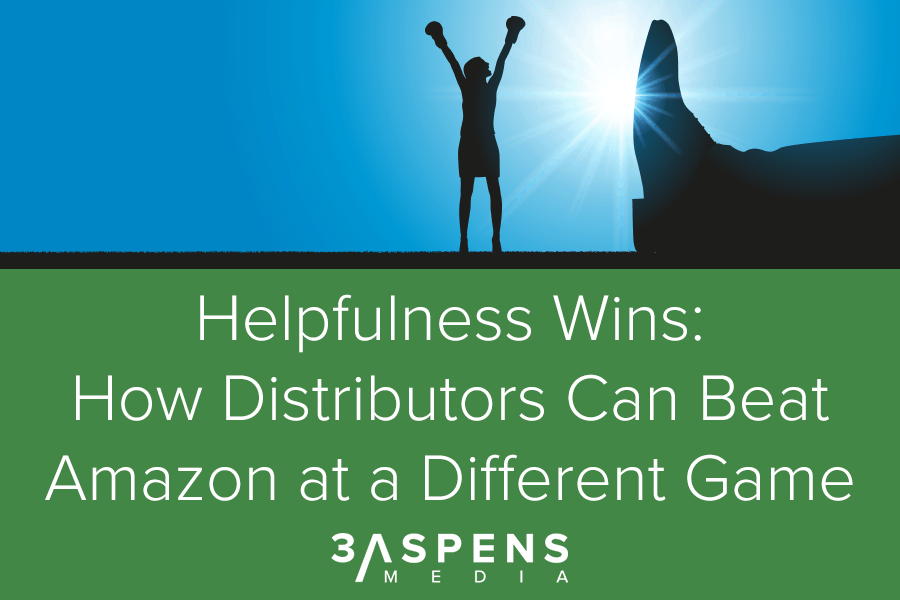Stand around the proverbial water cooler long enough and you’re bound to hear chatter about Amazon. It’s no secret that Amazon is extending their reach and expanding their offerings, year after year. In fact, an article from Modern Distribution Management reported that Amazon’s sales increased by 31% in 2018. (They didn’t break out the Amazon Business part of the business.) Now is the time for distribution companies to employ winning strategies to retain existing customers and attract new ones. Surprise, this includes strategies that don’t necessarily compete with Amazon but beats them at a much different game.
Distributors have something that Amazon doesn’t have — extensive product and application knowledge.
No amount of global growth can position Amazon as a product expert – at least not in the way that distributors are. The best place to communicate that expertise (other than in-person) is through digital and print marketing content as part of a content marketing strategy.
For many, content marketing remains a mystery. It really is simple. Content is everywhere. Content is what drives your sales letters. Content is found in your emails and on your website. Content is how you communicate your services, products and offerings to the people and companies you want to do business with. Quite simply, content allows you to capitalize on the very thing that sets you apart from the competition: your knowledge and experience.
By capturing some of that “tribal knowledge” you have gathered over the years, you can position yourself as more than a seller, but as a guide. Rest assured, you don’t have to give away the secret sauce. No, not at all. The goal is simply to be an ally, to be there for your customers when they need answers. Harnessing your experience and technical knowledge through helpful content allows distribution professionals the opportunity to compete in the modern marketplace and win.
Here are four best practices for creating helpful and engaging content for your customers:
- Create content that resonates with your target audience.
Take the time to research your customer. Ask current customers about their challenges and what kind of information or guidance they are looking for. Where do they prefer to get their information —from blog articles, videos, infographics or newsletters?There are many types of content you can create in many different formats. Having this data at the beginning will make content creation more feasible and more effective. - Optimize for search.
What does this even mean? It means you could create the most helpful resource that has ever existed in your field. But it doesn’t do you any good if no one can find it online. Take the time at the front end of content creation to discover keywords and phrases your customers are searching for. This way, your helpful content is accessible to more searchers. - Present customers with a clear solution.
Once you know what your customer’s challenges are, offer them ways to alleviate their pain points. The tried-and-true KISS principle (keep it simple, stupid) is great advice. People want solutions that are simple, easy to understand and minimizes any guesswork on their end. Without being salesy, guide them towards the solution they are looking for with clear and concise language. - Promote your content through social media.
Nearly half of the world is actively using social media, according to the2018 Global Digital suite of reports from Hootsuite and We are Social. That’s over 3 billion people. It would be crazy for brands to not to take advantage of social platforms and engage with customers. Social media can increase brand awareness, build relationships and establish your company as a thought leader. So, use it.
Rather than attempting to “out-Amazon” Amazon, independent distributors should focus on what differentiates them — their specialized knowledge. If you would like to learn more about how 3 Aspens Media creates marketing content for our customers, read How We Write Blogs for Our Clients (So They Don’t Have To).



